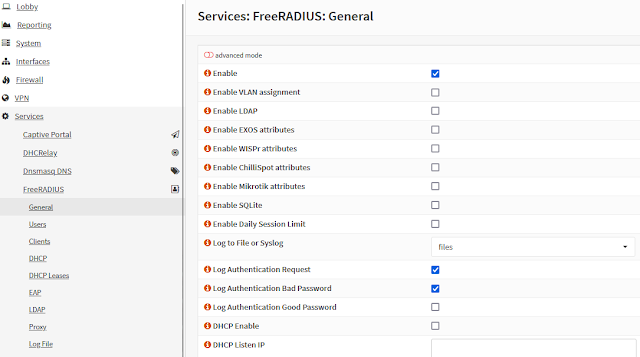802.1X Easy
802.1X Easy
It seems I like doing things the hard way sometimes. Packetfence was that next thing. After much trial and error I fell back to something simpler that I already had running. OPNSense with FreeRADIUS.
My goal is to create a wifi lab that utilizes Dot1X to better understand how enterprise wifi works. While my day job does allow me troubleshoot it, I cant easily test and play around with it.
My setup is basic but that's what makes this so great and accessible for people without the space or extra money for power hungry devices.
- An OPNSense VM running on Proxmox (Or a standalone device)
- A Cisco 3560 desktop style gigabit POE switch
- 2 Unifi AP AC Lites
And that's really all you need. You could even go a little cheaper with a basic POE switch if you don't plan on doing wired Dot1X.
Once your OPNSense instance is setup you just need to download the FreeRADIUS plugin then you can begin configuring Dot1X.
Configuration
You'll want to create a CA to issue certificates. Once created you can also download this Root Certificate as we will need it later
System > Trust > Authorities
Next you need to issue a server certificate for FreeRADIUS to use
System > Trust > Certificates
Moving over to FreeRADIUS we need to first enable it
Services > FreeRADIUS > General
Services > FreeRADIUS > Clients
Now’s the time to pick an authentication method. To make it easy on myself I went with PEAP/MSCHAPv2. While its old, slow, and technically broken, its still widely used and easier to manage. Make sure you check the box for Use own certificates, change the Root Certificate to your CA and select the certificate you issued earlier under Server Certificate
Services > FreeRADIUS > EAP
You can enable multiple authentication types but that requires a little config editing which is not quick and dirtyThis is incorrect, by default it supports all EAP methods at the time of writing/setup
Since we’re using MSCHAP we’ll need a user account too
Services > FreeRADIUS > Users
That’s everything for FreeRADIUS. Go ahead and install your Root Cert on your device, enter your UN/PW and now you should be using Dot1X at home!
I hope this little guide was helpful and demonstrated that it fairly easy to get this working for a home lab. Again this is meant to be a quick and dirty setup. Yes its possible to use EAP-TLS, external CA’s, VLAN assignments, etc. In my opinion this allows you to eventually learn about all that but first and foremost it lets you start understanding EAP flows and FT over Dot1X which can be difficult outside of an enterprise.








Comments
Post a Comment
Leave a comment...